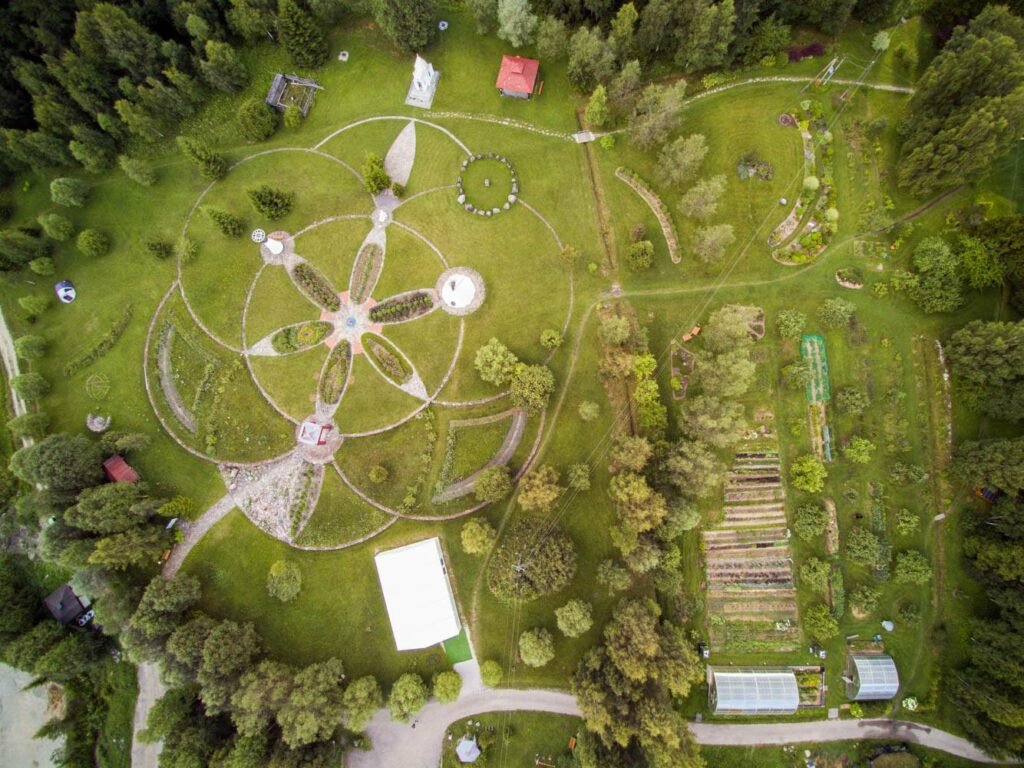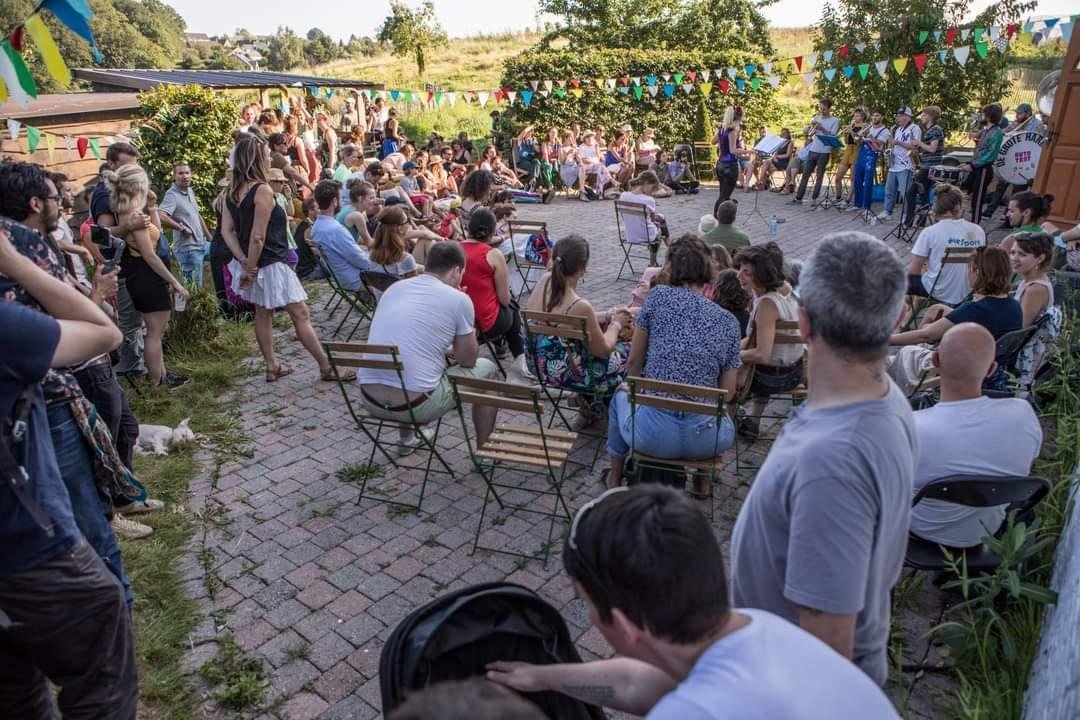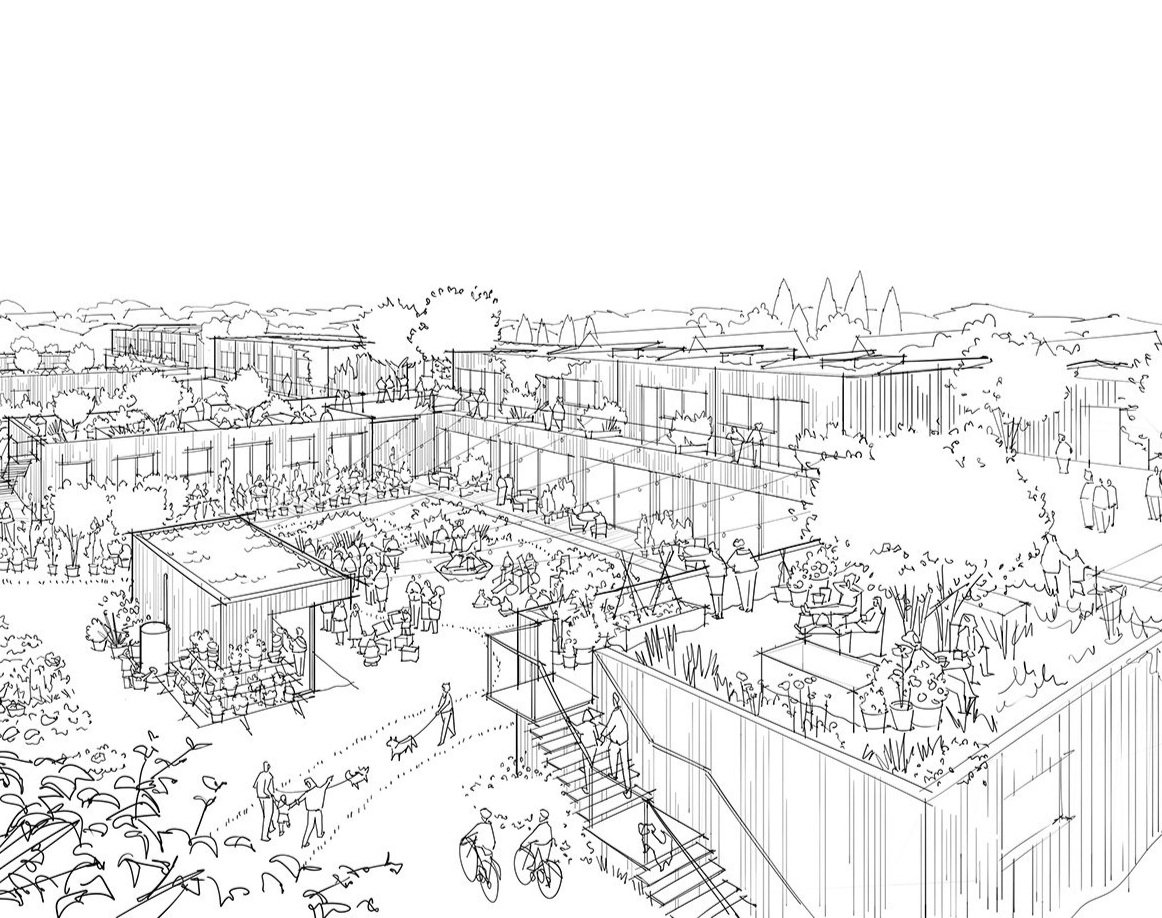FOCUS WEEK : Third places, territorial laboratories
There seems to be a consensus: there is no consensus on the definition of a third place.
However, the number of projects recognising themselves under this term is multiplying, and many of them display ambitions to strengthen the resilience of the areas in which they are located. In this analysis, we propose to explore how third places can be laboratories for building the world of tomorrow. By shedding light on this protean phenomenon, we identify the characteristics that constitute levers for responding to the many challenges that we face.
Cursors of commitment are also proposed in order to situate and develop these projects as vectors of resilience.
This article was written in collaboration with Trois-Tiers. This organization’s remit is
to host training courses to raise awareness and build the skills of collectives/teams,
to bring together project leaders and professional mentors within a learning community,
to work on a plea for recognition and support for third places by all the stakeholders in their ecosystems (administrations and institutions, players in the food/cultural/real estate system, citizens, etc.).
In recent years, there seems to have been a proliferation of collective spaces and projects that have come to be known as ‘third places’, prompting us to take a closer look at them and question their potential contribution to the invention of lifestyles that respect living beings.
The term ‘tiers-lieux’ (third places) is increasingly present in the French-speaking landscape of Belgium, as evidenced by the recent call for projects launched in 2022 by Walloon Environment Minister Céline Tellier and the subsequent funding of 23 projects in rural areas.
In this EPALE blogpost, you can listen to an interview of the minister about this project.
This was highlighted at a one-day exchange in December 2022 between project founders who identify with the term ‘third places. The term ‘laboratory’ was also used several times during the day, in connection with the projects' desire to respond to unsatisfied needs, to offer services that don't exist or have disappeared, to unlock the imagination about possible futures, etc. (with the downside of breaking out of the boxes - particularly the administrative ones - which gives rise to numerous difficulties, as we will come back to).
We therefore felt it was important to take a closer look at how these projects could serve as laboratories for building the sustainable world of tomorrow.

Third places ?
The origins of the concept
The concept has its origins in ‘The great good place’, a book published in the late 1980s by the American urban sociologist Ray Oldenburg, who uses the term ‘third place’ to refer to spaces at the interface between the home (first place) and work (second place). These intermediate places, or ‘third places’, such as cafés or post offices, enable people to meet informally and encourage interaction, exchange, mutual aid and debate. For Oldenburg, they are essential places for democracy and civic engagement.
Multiple roots
Beyond the ‘official’ origins that gave them their name, today's third places are considered to share their roots with a number of very diverse historical movements, such as the hacker and opensource philosophy, the commons, the mutualist and popular education movements, the social and solidarity economy, libertarian utopias, squats and cultural wastelands, collaborative architecture and transitional urbanism, the start-up culture of the 90s, ecovillages, the permacultural movement, and so on. Today's third places have inherited certain cultural codes, tools and operating methods that are used in most projects. The markers of these multiple origins are expressed to a greater or lesser extent depending on the orientation of the project and the ‘culture’ of its promoters.
Raphaël Besson suggests distinguishing between third places on the basis of their purpose :
- third-party activity centres (shared workspaces, exchange and collaboration communities, etc.)
- innovation facilities (fablabs, living labs etc.)
- cultural third places (third place libraries, cultural wastelands, living labs, fablabs or learning labs deployed within universities, etc.)
- Social third places (projects aimed at citizen participation, social entrepreneurship or democratic transition. They are strongly structured around players in the collaborative economy, the digital economy and the social economy (SSE).
- third places for services and public innovation (social concierge services, multi-service shops, public innovation laboratories, etc.).
Assuming that third places by definition have a multiplicity of purposes and functions, Trois-Tiers proposes not fixed categories of third places, but five factors of variability, remembering that all combinations are possible, making the number of ‘types of third places’ potentially very large:
- Who is behind the project? Is it an individual or collective initiative (and if collective: citizen, association, institutional, hybrid)?
- What are the roots of the project? Academic, socio-cultural and artistic, entrepreneurial, nurturing, agricultural, social, educational, health, democratic, ecological and resilience?
- Where will the third-place be located? Urban, suburban, rural, virtual?
- What is the temporality associated with the project? Temporary, transitory, permanent?
And remember that beyond these factors of variability, there are no limits to the formulas, apart from the dreams shared by the humans behind these initiatives.
Third places in Wallonia
In Wallonia, third places are emerging against a backdrop of multiple crises that the region, like the rest of the planet, is going through (environment, finance, health, economy, social, energy, culture, etc.). ‘Driven by a variety of issues, citizens and associations are mobilising and coming together in spaces that are the fabric and theatre of new ways of creating society. Valuing heritage and environmental wealth, food security, mobility, relocation of work, housing, social cohesion or even responding to local problems such as shortages of certain services or the lack of coworking spaces... Depending on the areas they develop, third places harbour the seeds of ‘local solutions for a global disorder’, to use Coline Serreau's favourite phrase’.
This is how we have seen the emergence of a former theatre that is also becoming a citizens' cooperative and canteen/public bar, a farm that is becoming collectivised and developing a socio-cultural programme, a hamlet that is being revitalised with workshop spaces and a campus/accommodation centre, a convent run by a dwindling number of nuns who live alongside a lay group of around twenty people and aim to pass on their craft skills, a memorial site with a cemetery and old lime kilns that is becoming a place of transmission and the arts, a medical centre surrounded by market gardeners, a few dwellings and a communal space open to the general public.

Local community spaces for a systemic transition
While they should not be seen as perfect ‘all-in-one’ solutions, at the risk of overloading the system and shifting public responsibilities to their detriment, third places, by virtue of their specific culture and/or operating methods, can help to address a number of current and future issues, particularly in relation to the challenges of systemic transition in our territories.
In a speech at the Tiers-Lieux pour l'Europe forum (Montpellier, 2023), Belgian economist Sybille Mertens (ULiège) summed up the difficulty of taking collective action to deal with the crises shaking our daily lives:
The challenges facing our civilisations today (climate upheaval, loss of biodiversity, social exclusion, migratory crises, etc.) call for collective action. They are necessary, but not easy: after decades of the development of market logic and the individualistic solutions associated with it, each and every one of us feels that these problems are beyond us and that the solution will come from elsewhere. Public institutions, equipped to face up to these challenges, are confronted with systemic problems that often go beyond their perimeters of action. In a society that is becoming increasingly dualist and fragmented, they are also finding it increasingly difficult to build consensus and implement truly collective solutions.
You can also find some input about this forum in this Epale Blogspot
Faced with these challenges, Sybille Mertens places third places in line with the governance of the commons as advocated by Elinor Oström: third places are local collective spaces organised according to democratic procedures, which enable a local community to be activated and mobilise local resources. And they do so with a capital of trust and the power to act on a local scale. These places are also places of learning, emancipation, creativity and collective capitalisation, where social and technical innovations are developed, providing potentially appropriate solutions to future crises. They are therefore places where ‘niches’ can be found in a wide range of sectors, where experimentation of all kinds can take place (and, above all, where experimentation can be linked together) on the fringes of the dominant systems that are running out of steam.
Finally, third places can accept a long-term dimension, far removed from the urgency of the market and electoral short-termism.
They can therefore be catalysts for collective action that is sustainable and coherent at local and regional level. Depending on the services and functions it develops and the specific characteristics of the area in which it is set up, a third-party centre can activate and test responses to a variety of complementary issues:
- Economic issues: new ways of working, development of entrepreneurship, relocation of production and services, innovation, pooling and networking, etc.
- Social issues: creating new non-market spaces for social interaction, breaking down isolation, mixing, decompartmentalising and activating social cohesion, reducing the digital divide, supporting emancipation, etc.
- Environmental issues: promoting and activating short circuits, raising awareness of ecological issues, experimenting, developing solutions and putting them into action, etc.
- Cultural issues: creation and dissemination of mobilising narratives revealing desirable futures, impact on social perceptions, activation of cultural rights, new peer-to-peer learning methods, heritage conservation and/or enhancement, creation and dissemination of knowledge commons promoting access to knowledge, etc.
- Political issues: strengthening territorial cohesion and development, urban and rural regeneration, regional resilience, citizen participation and multi-stakeholder governance, etc.
In this sense, they are allied spaces that contribute to the systemic transition of our society.
Catalysts for collaboration and hybridisation
Because of their accessibility and their ability to bring together people from different backgrounds, third places can act as catalysts for collaboration, experimentation and knowledge sharing.
By hosting a multiplicity of functions and activities (agricultural, food-producing, cultural, entrepreneurial, craft, inclusion, civic, health, education, etc. - the possibilities seem endless), they encourage the hybridisation and cross-pollination of ideas, fostering the emergence of innovative solutions to social and environmental problems. Like natural ecosystems, the more diverse a system is, the more resilient it is, because one function can be fulfilled by several ingredients and one ingredient can have several functions. L'Arbre qui Pousse in Ottignies, for example, combines a school, crèche, group and emergency housing, training centre, seasonal rentals, market gardening, tree nursery, vineyard and small livestock farm, bakery, events centre, restaurant and bicycle workshop in a single place and a shared ecosystem, with the aim of experimenting with a complete system serving the ecological transition and, in particular, the community's food resilience. (see below for more details about this organisation)
Incubators for local initiatives
Third places act as incubators for local initiatives, enabling them to test their ideas in a secure setting with the support of a community of peers, offering them a testing ground for sustainable practices and alternative economic models, such as the circular economy or local currencies. Some venues, such as the Maison Folie in Mons, go so far as to offer activation and support services for the development and setting up of citizen and community projects in their local area. ((see below for more details about this organisation)
Places to gather and mobilise
In this era of meta-crises, third places, because they are appropriated by an active, multi-disciplinary local community that is experienced in the logic of experimentation, can also constitute resource spaces and gathering places that enable residents to mobilise quickly, and thus contribute to the resilience of territories. In this respect, the covid-19 crisis was a life-size demonstration of the responsiveness and innovative capacity of many third places, particularly in France, to respond to local emergencies. As shown by La Compagnie des Tiers-lieux in a web series13 dedicated to the adventures of containment, while many sectors were at a standstill, many third places in the North were able to mobilise the expertise of their communities to sew masks, design adapters for respirators or visors for care staff, prototype them in the fablab and send them to production in a local company, organise the distribution of meal parcels or provide digital support for teleworking...

Conclusion
The concept of a ‘tiers-lieu’ is a protean reality, difficult to grasp. Here, we're focusing on the notion of a hybrid space, combining several functions/activities with a dimension of co-management by a mixed community of users.
Third places can be categorised according to their main purposes, but also according to other factors of variability: initiator, roots of the project, location, temporality. Taking all these factors into account, the number of possible combinations, and therefore ‘types’ of third places, is potentially very large.
In Wallonia, where this diversity is very much in evidence, third places are emerging in a context of multiple crises that the region, like the rest of the world, is going through. As local collective spaces, organised democratically, we believe that third places can help to meet many current and future challenges, particularly those linked to the systemic transition of our territories. They can activate a local community capable of mobilising local resources. They are also spaces for learning, emancipation, creativity and collective capitalisation, enabling the development of innovations on the fringes of dominant systems that are running out of steam. The spread of these innovations can also be facilitated by the proactivity of third places in terms of developing the network of local players.
With this in mind, Trois-Tiers is proposing in this analysis a series of commitment indicators, in the form of questions, derived from empirical data and designed as a work in progress that will be enriched by future contributions. These cursors call for a self-assessment by third places of their commitment in terms of collective practices, sustainable and viable inclusion in the local landscape, minimising their footprint and maximising their influence and impact. The aim is to help third places take a step back and look at their ability to bring about a different model of society.
Some other ressources are also already available on EPALE : (some of them are in french)
-Third-places in Europe - a benchmarking study | EPALE (europa.eu)
-Innovative learning spaces: What's in a name? | EPALE (europa.eu)
-EPALE-zine Innovative learning spaces | EPALE (europa.eu)
-L'arbre qui pousse, a Regenerative village aka rural Third place | EPALE (europa.eu)
-Third places: fallow land to encourage the emergence of citizens | EPALE (europa.eu)
Two other ressources can be reachable here, (a reportage from the national radio channel from the french-speaking part of Belgium -RTBF) and here (a CANVA presentation from Trois-Tiers)
Thanks to Pierre-Alexandre Klein & Marie Godart for the drafting of this article





